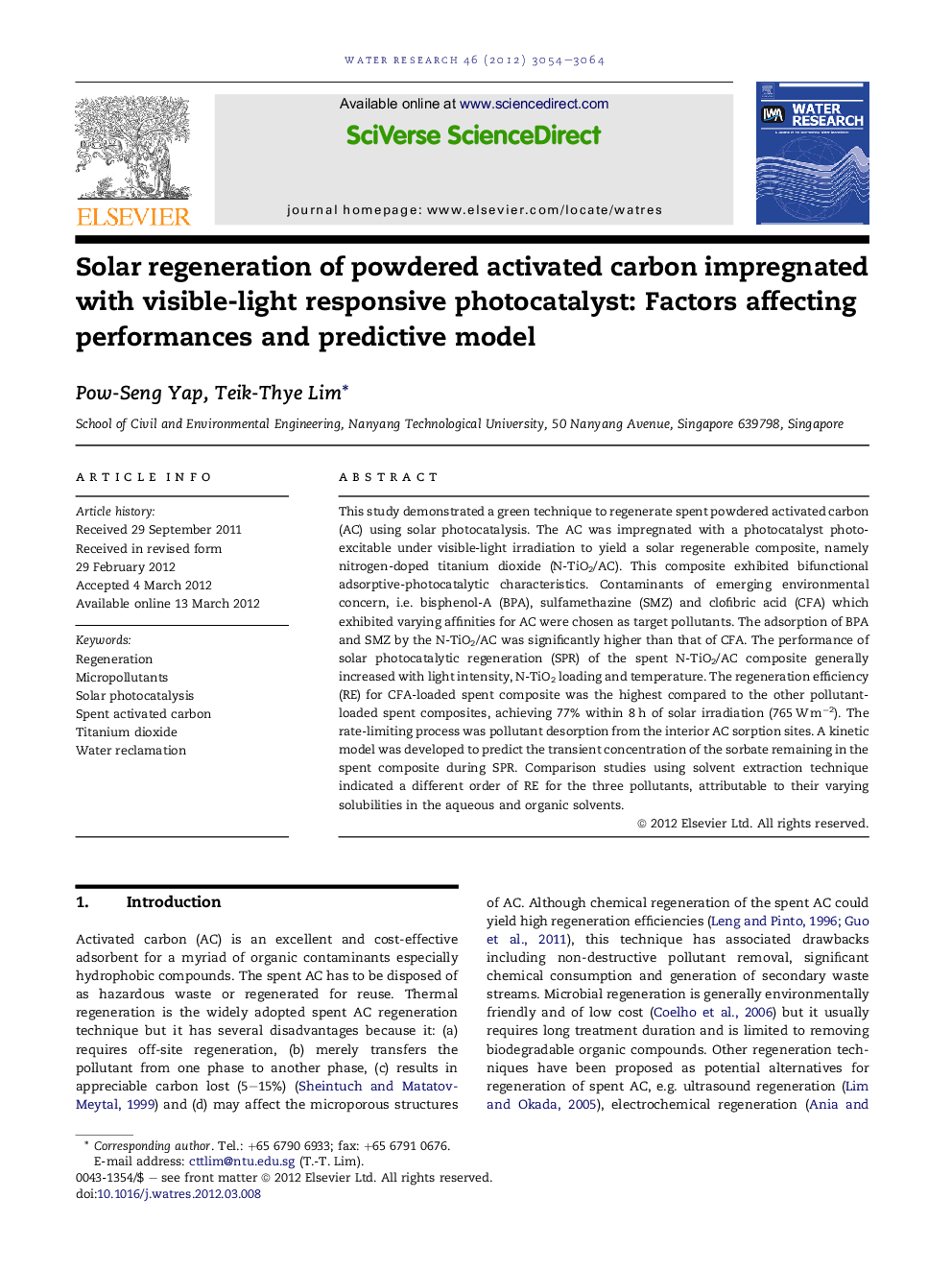| Article ID | Journal | Published Year | Pages | File Type |
|---|---|---|---|---|
| 4482797 | Water Research | 2012 | 11 Pages |
This study demonstrated a green technique to regenerate spent powdered activated carbon (AC) using solar photocatalysis. The AC was impregnated with a photocatalyst photoexcitable under visible-light irradiation to yield a solar regenerable composite, namely nitrogen-doped titanium dioxide (N-TiO2/AC). This composite exhibited bifunctional adsorptive-photocatalytic characteristics. Contaminants of emerging environmental concern, i.e. bisphenol-A (BPA), sulfamethazine (SMZ) and clofibric acid (CFA) which exhibited varying affinities for AC were chosen as target pollutants. The adsorption of BPA and SMZ by the N-TiO2/AC was significantly higher than that of CFA. The performance of solar photocatalytic regeneration (SPR) of the spent N-TiO2/AC composite generally increased with light intensity, N-TiO2 loading and temperature. The regeneration efficiency (RE) for CFA-loaded spent composite was the highest compared to the other pollutant-loaded spent composites, achieving 77% within 8 h of solar irradiation (765 W m−2). The rate-limiting process was pollutant desorption from the interior AC sorption sites. A kinetic model was developed to predict the transient concentration of the sorbate remaining in the spent composite during SPR. Comparison studies using solvent extraction technique indicated a different order of RE for the three pollutants, attributable to their varying solubilities in the aqueous and organic solvents.
Graphical abstractFigure optionsDownload full-size imageDownload high-quality image (117 K)Download as PowerPoint slideHighlights► Bisphenol-A, sulfamethazine and clofibric acid were the target pollutants. ► Various governing factors affecting solar regeneration performance were evaluated. ► A versatile kinetic model was developed to predict the regeneration efficiency. ► Solar photocatalytic regeneration is a green and sustainable regeneration technique. ► Comparison of solar regeneration efficiency with solvent extraction was performed.
